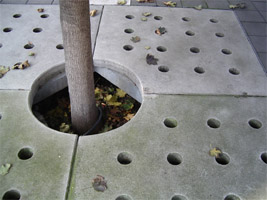 |
 |
 |
 |
 |
 |
 |
 |
 |
 |
 |
Indicators and Benchmarks

The benchmarks and indicators applied to support urban planning and management
processes in assessing urban green/blue infrastructure could be broadly structured
into several groups that address:
• Availability of urban green/blue space (total quantity of green/blue area, percentage of greenery and water surfaces in the city, area per capita, etc); as already mentioned, these benchmarks could be hardly used for comparison between cities as they are strongly influenced by the local spatial and cultural/historical context; more detailed indicators are in some places introduced to provide information
about shape, types of functions, etc. of the green space (EEA, 1995).
• Accessibility of green/blue areas (proximity of urban green areas measured
by percentage of people either within 15 min of walking from urban green areas (EEA, 1995) or within a distance of 300 m (EEA, 1995; EC, 2000a;) or 500 m (EEA, JRC, 2002). Based on health considerations, some authors propose that the indicator of green space proximity should be reduced to 150m from home (COST C11)
• Habitat quality and maintenance of biodiversity – benchmarks are related to the fragmentedness of green spaces and isolatedness of green space,
the quality of urban wildlife measured by number of bird species (EEA, 2002), the protected and threatened species (vascular plants, breeding birds, insects, etc.);
• Integrated assessment of the urban green system effectiveness combining environmental aspects (health, safety, and biological diversity)
with commercial, social and cultural ones (COST C11, URGE).
A large number of studies in different European countries have contributed to developing indicator sets that try to link social, environmental and economic considerations while being sensitive to particular national and local requirements to urban green space (Herzele, Wiedemann, 2003; Ståhle, 2002; Thoren, 2000, etc).
The Interdisciplinary Catalogue of Criteria developed within FP5 URGE project currently provides the most comprehensive set of indicators on urban green spaces with 35 criteria for the city level (each addressed by one or several indicators)
structured into 4 groups:
(1) Quantity: surface area, fragmentation, isolation from other green spaces, connectivity of green spaces, soil sealing, supply of green spaces; accessibility; internal/external integrated system.
(2) Quality: species diversity, habitat diversity, protection of cultural and
natural heritage, capacity to improve environmental quality; city identity;
awareness of physical and emotional benefits derived from urban green space.
(3) Use: recreation, sports facilities, safety, education in urban green space,
substitution, production, employment.
(4) Planning, development and management: urban green policy and its legal context, planning instruments, aesthetic and cultural aspects, citizens’ involvement, inclusion in Local Agenda-21 Plans, integration into other kinds of planning, responsibilities within the administration, integration of private green spaces, budget for UGS, activities to create income, fund-raising capacities, sustainable waste management.